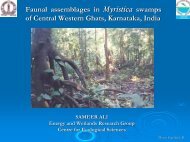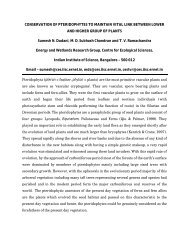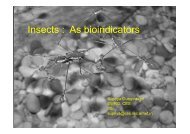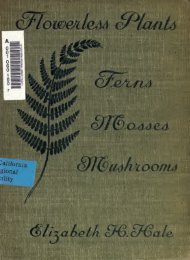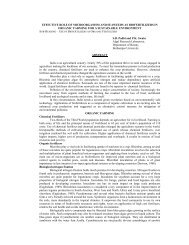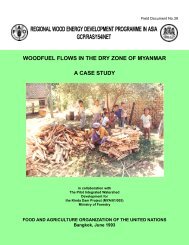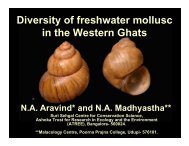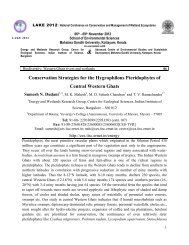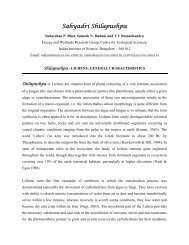a brief comp a brief comparison of modern pteridophyte arison of ...
a brief comp a brief comparison of modern pteridophyte arison of ...
a brief comp a brief comparison of modern pteridophyte arison of ...
You also want an ePaper? Increase the reach of your titles
YUMPU automatically turns print PDFs into web optimized ePapers that Google loves.
108 Indian Fern Journal Volume XXVI (2009)<br />
concerning Asia and many small genera were being treated. Retrospectively it can be seen<br />
that Pichi Sermolli’s scheme was in many respects an ode to taxonomic "splitting" and the<br />
fragmentation <strong>of</strong> more recognisable and fundamental genera into small groups <strong>of</strong> species. In<br />
keeping with most work at the time, it was largely a classification based too much on<br />
differences instead <strong>of</strong> on a necessary balance between differences and similarities, keeping<br />
in mind the significance <strong>of</strong> the degree <strong>of</strong> differences observed. However in general it was<br />
the best reasoned classification ever produced and far from decrying it as has sometimes<br />
been the case by a few authors subsequently, it remains <strong>of</strong> great significance because the<br />
discussion he made at all points allows it to be modified and related to more recent work,<br />
by "unsplitting".<br />
Pichi Sermolli (1953, 1958, 1970, 1981, 1982, 1986, 1993) also listed and<br />
discussed all published Pteridophyte families and genera, and with his great knowledge <strong>of</strong><br />
nomenclature and his careful application <strong>of</strong> the ICBN to historical literature, was thereby<br />
able to produce a guide-line that enabled future workers to deal with the major <strong>modern</strong> phase<br />
<strong>of</strong> revision <strong>of</strong> the classifications <strong>of</strong> the 1970s.<br />
About the same time Crabbe, Jermy & Mickel (1975) produced a detailed generic<br />
list in taxonomic order which was similarly split the families into minor genera and Nayar<br />
(1970) had produced an evolutionary scheme for families, though <strong>of</strong> necessity less soundly<br />
based and with the recognition <strong>of</strong> a few highly anomalous new genera.<br />
Throughout all this time, and continuing from his ground-breaking work alongside<br />
Christensen in the 1930s, the late Pr<strong>of</strong>essor Ren-Chang Ching was working actively in<br />
Beijing on Chinese Pteridophytes, the richest region after S.E. Asia, and was able to make<br />
many very successful monographic studies <strong>of</strong> <strong>comp</strong>lex genera in China, <strong>of</strong>ten understanding<br />
relationships that others had been unable to fathom out, particularly in the Polypodiaceae<br />
etc. A considerable number <strong>of</strong> the genera and families recognised by Pichi Sermolli had been<br />
raised by Ching. Following an earlier attempt (Ching 1940), Ching’s (1978) classification<br />
<strong>of</strong> Chinese Pteridophytes, The Chinese fern families and genera. Systematic arrangement and<br />
historical origin, was published almost simultaneously with Pichi Sermolli’s and combined<br />
with the discussions in his monographic publications was also <strong>of</strong> great importance and value,<br />
especially given his detailed knowledge <strong>of</strong> species and groups almost unknown outside<br />
China.<br />
For the next nearly 15 years these two systems, both based on detailed discussion<br />
<strong>of</strong> their groups built up over previous decades, but both characterised by the recognition <strong>of</strong><br />
many "micro-genera" or families and based on a high degree <strong>of</strong> "splitting", held sway over<br />
international pteridological opinion, virtually unchallenged. Yet both, and in particular<br />
Ching’s scheme, contained a number <strong>of</strong> controversial genera (and families) that many other<br />
pteridologists would not recognise.<br />
Bir (1983) listed and summarised the schemes <strong>of</strong> most <strong>of</strong> those working on<br />
Pteridophyte classification at the time, and mentioned various different points <strong>of</strong> view, but



